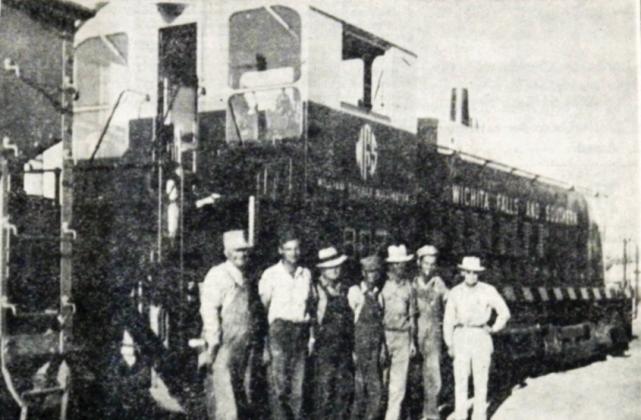The Jake Hamon Railroad had always run steam locomotives on the line all the way back to the first passenger train that arrived in Dublin in 1920. The big change to diesel motive power happened in September of 1953 when the shiny and new diesel pulled into the Dublin station. It was to be used on the Ranger to Dublin portion of the line. The honored workmen on this inaugural run hoped that this new locomotive was an indication that the Wichita Falls and Southern railroad would not be abandoned as had been rumored in recent weeks. (Dublin Progress, September 18, 1953) The railroad began as a dream of Jake Hamon who was a rich Oklahoma oil man when the railroad began to take shape. Just as the railroad was making progress in building the line, Jake Hamon was murdered by his girlfriend. After his death, his stimulus money came to an end and the lack of Hamon’s leadership created difficult times for the railroad.
The construction of the railroad was completed in 1920 after Dublin community leaders raised a total of $270,000 to be paid as a bonus to bring the line here and for the purchase of a right-of-way through Dublin. The end of the line was the freight station for the Frisco Railroad and served as a WFR&FW passenger station until revenue no longer allowed them to have passenger trains. The typical passenger train had three passenger cars and a baggage car. (Dublin Progress, May 15, 1953) (Dublin Progress, May 9, 1922) That line passed right through the middle of the Dublin Water Works on its way to the Dublin Station. The concrete tank next to the Water Works that now sports a Dublin logo and Texas flag was built by the railroad to replace a portion of another tank that had to be removed to make way for the tracks between the tank and the Water Works building. (Dublin Progress & Telephone, March 19, 1920) In 1926 the Frisco Railroad made the decision that the WFR&FW could no longer use their freight station as the end of the line here. With that, the railroad was forced to build the small station that still stands as part of the tax office on South Grafton. Train cars were brought to town loaded with lumber and brick to build the small station. It was finished in the summer of 1926, in the middle of the bricking of Dublin downtown streets. (Dublin Progress, May 28, 1926) After their new diesel came to town in 1953, no announcement had been made by the new owners for continuing operation of the road here. However, a sharp increase in freight over this end of the line and the new diesel suggested that the line would be maintained.
Despite all efforts to keep the railroad going, it was finally shut down in 1954 bringing to an end one of the great railroad stories of Texas. (Dublin Progress, April 16, 1954)


